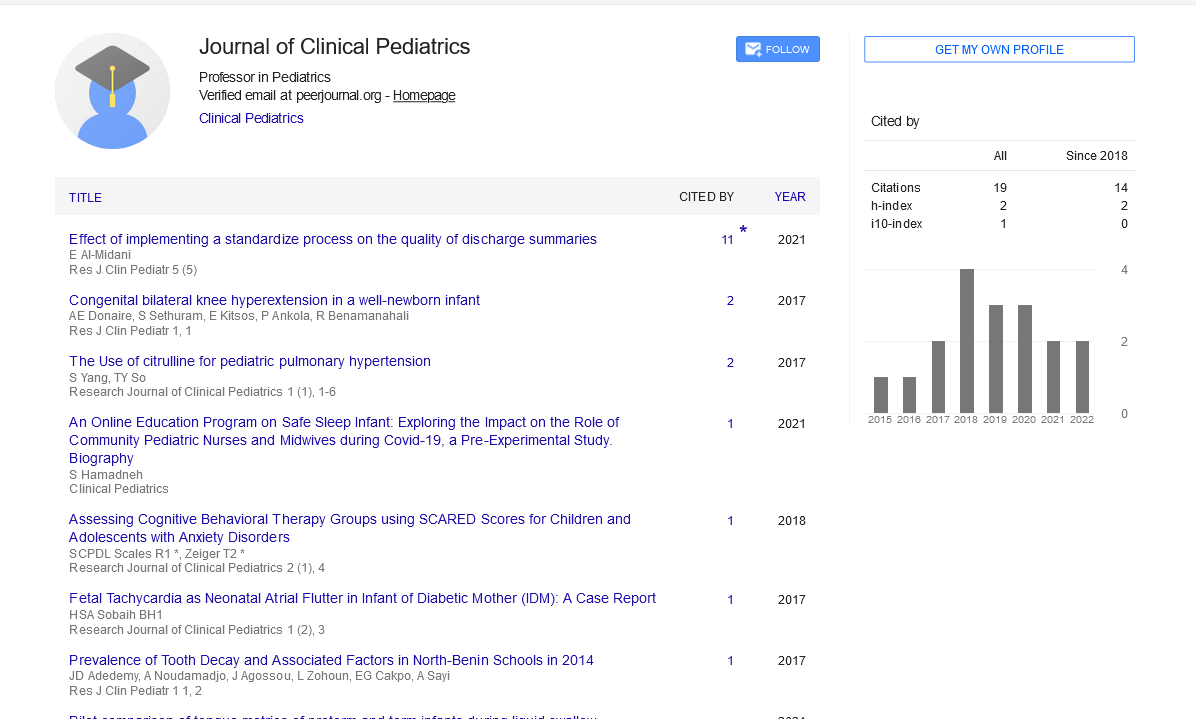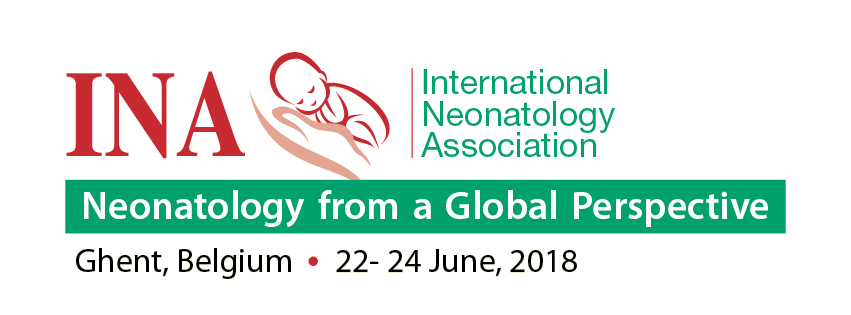Case Report, Res J Clin Pediatr Vol: 2 Issue: 1
Meningitis Complicating Infected Cephalohematoma Caused by Klebsiella pneumoniae- Case Report and Review of the Literature
1Department of Pediatrics, Feng-Yuan Hospital, Ministry of Health and Welfare, Executive Yuan, Taichung, Taiwan
2College of General Education, HungKuang University, Taichung, Taiwan
*Corresponding Author : Jui-Shan Ma
Department of Pediatrics, Feng-Yuan Hospital, Ministry of Health and Welfare, Executive Yuan, Number 100 An-Kan Rd., Fengyuan Dist, Taichung City 42055, Taiwan
Tel: (+886) 4-25271180 ext. 1590
Fax: +886-4-25284445
E-mail: jma052968@gmail.com
Received: December 12, 2017 Accepted: January 22, 2018 Published: January 29, 2018
Citation: Jui-Shan Ma (2018) Meningitis Complicating Infected Cephalohematoma Caused by Klebsiella pneumoniae- Case Report and Review of the Literature .J Clin Pediatr 2:1.
Abstract
Infected cephalohematoma associated with meningitis is rare in neonatal period. Herein we reported a case and the causative microorganism is Klebsiella pneumoniae. With intravenous ceftriaxone therapy and surgical drainage of the infected cephalohematoma, he was successfully treated and no sequel was reported. Early diagnosis of the association of meningitis is important and leads to a good prognosis. The reported cases of infected cephalohematoma with concurrent meningitis in literature are also reviewed.
Keywords: Infected cephalohematoma; Meningitis; Klebsiella penuimoniae
Case Presentation
A 21-day-old male infant was admitted to a regional hospital after 3 days of pyrexia. A 5×5×7 cm tender cephalohematoma with fluctuation was noted over his right parietal area. The overlying skin was erythematous but intact. His anterior fontanel was neither tense nor bulged. The other physical and neurological examinations were unremarkable. Laboratory evaluation revealed a WBC count of 11,400/ mm3 with 44% segments, 5% bands, 35% lymphocytes, and 16% monocytes. The CRP level was 3.0 mg/dL and his skull X-ray is normal. Diagnostic tapping of cephalohematoma was done and the aspirate was sent for bacterial culture. Intravenous ampicillin (150 mg/kg/day) and gentamicin (5 mg/kg/day) therapy were started after initial septic work-up. However, his fever persisted despite of antibiotic therapy and surgical drainage. The bacterial culture of blood and the aspirate revealed K. pneumoniae, which were susceptible to cefazolin, gentamicin, and ceftriaxone. Lumbar puncture was performed on the third admission day and the CSF study revealed a WBC count of 1,720/ mm3 (with 49% neutrophils and 51% lymphocytes), RBC count of 280/ mm3, sugar 45 mg/dL, and total protein 192 mg/dL. The antibiotic therapy was shifted to intravenous ceftriaxone (100/mg/kg/ day) and kept for a total of 21 days. He became afebrile one day later and his CSF culture was sterile. He remained well and no sequel was reported in the follow-up visits.
Discussion
Infected cephalohematoma (IC) with concurrent meningitis in the newborn is rare but potentially life-threatening. Gram negative rods represent the predominant bacteria of IC with concurrent meningitis in several literature reviews [1-5]. In Taiwan, Chang et al. [6] reported 3 of 28 infants with IC to be associated with meningitis in a period of 25 years and all the 3 cases are caused by Escherichia coli. A recent literature review of IC reported 11 of 43 infants had concurrent meningitis. Escherichia coli represent 72.7% (8 out of 11) causative bacteria [3]. From a search of the literature on Medline, 14 reported cases of IC with concurrent meningitis and their clinical data were summarized in Table 1 [1-14]. The age of presentation is 2-21 days and a male preponderance is noted. Escherichia coli represent the most common causative bacteria and accounts for at least 84.6% of the reported pathogens. Pseudomonas aeruginosa and paracolon bacilli are less common pathogens which have ever been reported [4,11]. To our knowledge, the case we presented is the first case report of K. pneumoniae infected cephalohematoma associated with meningitis.
| References (Year) | Age | Sex | Complications | Organism | Total course of antibiotics | Surgical drainage | Outcome |
|---|---|---|---|---|---|---|---|
| Cohen (1946) | 7 days | Male | M, O, P | P. aeruginosa | NA | - | died |
| Kendall (1952) | NA | NA | M | NA | NA | NA | died |
| Gordon (1955) | 5 days | Male | M | E. coli | 6 weeks | + | recovery |
| Burry (1966) | 4 days | Male | S, M | E. coli | 20 days | + | recovery |
| Burry (1966) | 3 days | Male | S, M | E. coli | 20 days | - | died |
| Chiu (1972) | 2 days | Male | M | Paracolon bacilli | NA | + | died |
| Meignier (1989) | 18 days | Female | S, M | E. coli | NA | + | NA |
| Blom (1993) | 5 days | Male | S, M | E. coli | >2 weeks | - | died |
| LaBlanc (1995) | 14 days | NA | S, M | E. coli | 3 weeks | + | recovery |
| Huang (2002) | 19 days | Female | M | E. coli | 3 weeks | + | recovery |
| Chang (2005) | NA | NA | M | E. coli | NA | NA | recovery |
| Chang (2005) | 6 days | Male | S, M | E. coli | 3 weeks | + | recovery |
| Chang (2005) | 8 days | Male | S, M | E. coli | 5 weeks | + | recovery |
| Nakwan (2011) | 18 days | Male | S, M, O | E.coli (ESBL) | 4 weeks | + | recovery |
| Current report | 21 days | Male | S, M | K. pneumoniae | 3 weeks | + | recovery |
Table 1: Reported cases of infected cephalohematoma with concurrent meningitis in neonates.
Delayed lumbar puncture and previous antibiotic exposure might account for sterile cerebrospinal fluid (CSF) in the current case. Early detection of the association of meningitis plays an important role in determining the choice of antibiotic and the duration of the therapy. If such association is ignored, serious complications, even mortality, may ensue [5,10,13]. The third generation cephalosporin is believed to be adequate for treatment of such association. Nakwan et al. [10] reported a case with IC, sepsis, and meningitis which was caused by extended spectrum beta-lactamase (ESBL) producing E. coli and successfully treated with meropenem therapy and surgical drainage. It highlights the importance of increasing incidence of resistant bacteria in the neonatal infection. The durations of antibiotic therapy for IC with concurrent meningitis ranges from 3-6 weeks in literature. Although there is no established guideline, it is believed to be adequate to keep antibiotic therapy for 3-4 weeks in the absence of osteomyelitis [10,15]. Surgical drainage plays an important role in the treatment of IC with or without complications and failure of treatment has been reported with antibiotic therapy alone [3,5,9,12-14].
A total of 5 mortality cases are found in literature [4,7,11-13] and the overall mortality rate of IC with concurrent meningitis is estimated as 35.7%. It is suggested that mortality is related to the delayed diagnosis of meningitis and lack of surgical drainage [3,5,9,12-14]. Blom et al. [13] described the last case died of IC with sepsis and meningitis in 1993. Before it, at least 4 mortality cases were reported in literature [4,7,11,12]. With these instructive experiences, clinicians tend to pay more attention to the associated complications of IC, including meningitis.
Conclusion
In summary, meningitis is a rare but potentially life-threatening complication in in the newborn with IC. With early detection of the associated meningitis, combined adequate antibiotic therapy and surgical drainage often lead to a favorable prognosis.
References
- Lee YH, Berg RB (1971) Cephalohematoma infected with bacteroides. Am J Dis Child 121: 77-78.
- Huang CB, Wu KT, Hung FC, Huang SC (1996) Infected cephalohematoma in neonate. Clin Neonatol 3: 23-26.
- Burry VF, Hellerstein S (1996) Septicemia and subperiosteal cephalohematoma. J Pediatr 69: 1133-1135.
- Chiu FY, Lee CY (1972) Spontaneous infection of cephalohematoma: a report of four cases. Acta Paed Sin 13:12-17.
- LeBlanc CM, Allern UD, Ventureyra E (1995) Cephalohemtomas revisited: when should a diagnostic tap be performed? Clin Pediatr 34: 86-89.
- Chang HY, Chiu NC, Huang FY, Kao HA, Hsu CH, et al. (2005) Infected cephalohematoma of newborns: experience in a medical center in Taiwan. Pediatr Int 47: 274-277.
- Kendall N, Woloshin H (1952) Cephalohematoma: associated with fracture of the skull. J Pediatr 41: 125-132.
- Meignier M, Renaud P, Robert R, Roze JC, Rigal E, et al. (1989) Cephalohematoma infection in neonatal septicemia. Pediatrie 44: 27-29.
- Huang CS, Cheng KJ, Huang CB (2002) Infected cephalohematoma complicated with meningitis: report of one case. Acta Pediatr Tw 43: 217-219.
- Nakwan N, Nakwan N, Wannaro J, Dissaneevate P, Kritsaneepaiboon S, et al. (2011) Septicemia, meningitis, and skull osteomyelitis complicating infected cephalhematoma caused by ESBL-producing Escherichia coli. Southeast Asian J Trop Med Public Health 42: 148-151.
- Cohen SM, Miller BW, Orris HW (1947) Meningitis complicating cephalohematoma. J Pediatr 30: 327-329.
- Burry VF, Hellerstein S (1966) Septicemia and subperiosteal cephalohematoma. J Pediatr 69: 1133-1135.
- Blom NA. Vreede WB (1993) Infected cephalhematomas associated with osteomyelitis, sepsis and meningitis. Pediatr Infect Dis J 12: 1015-1017.
- Gorden HS, Aronow J (1955) Escherichia coli meningitis in a five-day-old infant complicated with infected cephalohematoma. JAMA 159:1288.
- Wang LY, Chen CH, Chen PY, Huang FL, Chi CS (1999) Infected cephalohematoma caused by salmonella infection. Clin Neonatol 6: 22-24.
 Spanish
Spanish  Chinese
Chinese  Russian
Russian  German
German  French
French  Japanese
Japanese  Portuguese
Portuguese  Hindi
Hindi 
